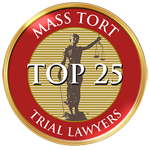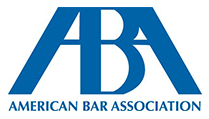Understanding Bard Ventralight™ ST Cases with Stern Law
Stern Law’s skilled product liability attorneys are not, at this time, taking cases involving hernia repair with Bard Ventralight™ ST mesh. We provide the following as an overview of issues some have reported following implantation of Ventralight™ ST mesh.
Ventralight™ ST Product Information
Ventralight™ ST is a surgical product used to reinforce a weakened wall of muscle or tissue that causes organ bulging known as a hernia. The Ventralight™ ST is constructed of polypropylene monofilaments. Polypropylene is a thermoplastic polymer that can be strung into fibers and knitted together to form a piece of mesh. Ventralight™ ST is manufactured by Davol Inc., a subsidiary of C.R. Bard, Inc., and is designed for laparoscopic repair of hernias. Surgeons can order Ventralight™ ST mesh in a large sheet or can create customized shapes and sizes to repair several kinds of hernias in various locations of the body.
The Ventralight™ ST is one in a line of Davol’s mesh products containing its registered Sepra® technology, which Davol says is a “hydrogel barrier” on one side of the mesh that purportedly minimizes tissue attachment to the mesh and provides internal protection during the healing process. The hydrogel barrier initially swells upon implantation and is resorbed within about 30 days following the patient’s surgery.
Ventralight™ ST Mesh Injuries
In our experience litigating cases against Davol and Bard involving Ventralight™ ST mesh, we have heard about a number of injuries the mesh can cause. The most frequent injuries our clients report include:
- Infection – Implantation of Ventralight™ ST mesh causes many people to develop postoperative infections. Some of these infections require antibiotic treatment alone, but some infections become severe enough to require surgical intervention.
- Chronic pain – Chronic pain is one of the most common issues our clients report after implantation of Ventralight™ ST mesh. Sometimes this pain is debilitating and interferes with people’s abilities to work and enjoy their lives.
- Adhesions – Adhesions, which are thick formations of scar tissue that stick to internal organs, are another potential complication from hernia repair using Ventralight™ ST mesh. Adhesions can lead to pain and dissection issues if further surgery is required.
- Mesh breakage – Ventralight™ ST mesh has been reported to tear or break following implantation, which can lead to hernia recurrence and other serious complications.
- Mesh shrinkage – The polypropylene material in the Ventralight™ ST can contract or shrink into itself over time. Shrinkage can cause the mesh to become detached from the tissue holding it in place, potentially leading to hernia recurrence, migration, or other complications.
- Mesh erosion – Erosion occurs when the mesh breaks down through surrounding tissue, leaving mesh exposed to cause pain, infection, or perforation of nearby organs. Erosion typically must be resolved through surgery.
- Mesh migration – Ventralight™ ST mesh also has a propensity to “migrate” or move to another area of the body, out of the hernia-repair position. Migration can lead to hernia recurrence, erosion, and perforation, necessitating another operation.
- Bowel obstruction – A bowel obstruction is a blockage of the large or small intestine. After surgery to repair a hernia using Ventralight™ ST mesh, inflammation and scar tissue can form and close off the bowel. The mesh can also adhere to the intestines, causing intestinal bowel incarceration. When a patient has a bowel obstruction, normal digestive function is impeded because stool cannot travel all the way through the intestines. This leads to a number of serious and painful problems. Bowel obstructions must be repaired with additional surgery.
- Intestinal fistula – An intestinal fistula is leaking of stomach or intestinal contents due to an abnormal hole or opening in the gastrointestinal tract. Hernia mesh like Ventralight™ ST mesh can cause these fistulas through intense inflammation and pressure on the intestines or by mesh erosion through or perforation of the intestines. These fistulas cause pain, diarrhea, nausea, dehydration, and malnutrition.
- Spermatic cord injuries – In men, particularly those undergoing repair of inguinal hernias with Ventralight™ ST mesh, the mesh can adhere to, perforate, or entrap the spermatic cord. This leads to pain, interference in sexual function, and in severe cases, azoospermia (a total lack of sperm in ejaculate fluid). The loss of sperm leaves these men unable to have children. If the injury to the spermatic cord is extreme and cannot be repaired in isolation, the affected man could end up undergoing a procedure to remove his testicles.
- Testicular ischemia – When men have Ventralight™ ST mesh implanted, especially in the inguinal area, they can develop a blood loss to the testicles. This blood loss is due to mesh constriction and mesh cutting off regular blood flow to all areas of the body. Some men have testicular shrinkage associated with this complication, and some men end up requiring removal of the testicles.
If you had surgery to implant Ventralight™ ST mesh for hernia repair and developed one of the above injuries, you might be entitled to compensation. Stern Law’s passionate team of lawyers can help you understand your options.
Ventralight™ ST Recall and Reports to FDA
In 2012, Davol issued a voluntary recall of the product because of mislabeling. The Ventralex™ patches come in several sizes, and Davol found out that a batch of its patches had been packaged in pre-printed cartons showing the wrong size. The 8 x 10 inch Ventralight™ ST patches had been packaged in the cartons for the 7 x 9 inch patches, and the 7 x 9 inch Ventralight™ ST patches had been packaged in the cartons for the 8 x 10 inch patches.
In the recall, Davol advised customers to examine their inventory and quarantine affected products for return to the corporation. Davol corrected the problem and placed the product back into the market. Though this recall did not involve safety of the product itself, Stern Law joins law firms across the country in alleging this mesh product is not safe for implantation.
Information about the safety of the Ventralight™ ST is readily accessible, including to the FDA. Manufacturers, doctors, and patients can submit reports of adverse events associated with drugs and medical devices to the Food and Drug Administration (FDA) to alert it to potential dangerous issues. The FDA has received numerous such reports regarding the Ventralight™ ST patch. Some of these reports include the following descriptions:
- In August 2017, a patient reported undergoing repair of a hernia using a Ventralight™ ST patch. Ten days after surgery, the patient had to have an additional surgery to remove the Ventralight™ ST patch because it had become infected. The patient reported that the surgery to remove the mesh also involved removal of a lot of muscle and tissue, and the procedure left him disabled.
- Also in July 2017, a patient reported undergoing emergent umbilical hernia repair with a Ventralight™ ST mesh patch. Several months later, the patient began to experience severe pain in the area of the hernia repair. The patient underwent several tests, but the patient’s doctors have not yet been able to determine the cause of the patient’s pain. The Ventralight™ ST has not been ruled out as the cause.
- Also in July 2017, a patient reported having a ventral hernia repaired with a Ventralight™ ST patch. Following surgery, the patient presented to the emergency room with severe abdominal pain. He was diagnosed with bowel obstruction and given conservative treatment. He then presented to the emergency room a second time with severe abdominal pain and was again diagnosed with bowel obstruction. The patient had to undergo an additional procedure to remove the Ventralight™ ST patch, repair the obstruction, and readdress the hernia. During the surgery, the surgeon found adhesions from the bowel to the patch. The surgeon had to remove some of the patient’s bowel in order to complete the procedure. The patient continues to experience abdominal pain and discomfort and has been told during multiple doctor visits that he probably has more adhesions but it not a candidate for additional surgery at this time. The patient is not able to eat large amounts of food due to the risk for bowel obstruction.
- Also in July 2017, a patient reported she had a gastric bypass and ventral hernia repair at the same time using a Ventralight™ ST mesh patch. Following the procedure, the patient began to experience severe abdominal pain. She reported having a CT scan and MRI that showed she had multiple recurrent ventral hernias. The hernias were “right through the mesh,” she reported. The patient has been schedule for surgery to remove the Ventralight™ ST mesh, but she is trying to deal with the pain and avoid more surgery. She is in chronic abdominal pain.
- In June 2017, a patient reported having a Ventralight™ ST patch implanted for repair of a hernia. Three days after the procedure, the patient began to show signs of an infection. Cultures came back showing an infection related to the Ventralight™ ST mesh. The patient was hospitalized and treated with antibiotics but ended up requiring a surgery to explant the mesh. During the procedure, the surgeon discovered a large hematoma. The mesh was surrounded by an infectious pocket of fluid, and the surgeon encountered extensive adhesions. Cultures grew E. coli. The patient was continued on antibiotics following this procedure and eventually released from the hospital.
- In May 2017, a patient reported undergoing hernia repair surgery with a Ventralight™ ST mesh patch. Since the surgery, the patient has suffered from abdominal pain on her right side, where the implant is located. She reported having a bulge about 4 to 5 inches in size by the site of the surgery. Her pain radiates to her lower pelvis and chest, she said, and she is also suffering from constipation, diarrhea, cramping, edema of her lower limbs and feet, unexplained weight gain, pressure in her abdomen, and an inability to have sexual intercourse. She reported continuing to work with her doctors to find the cause of all her issues, and the Ventralight™ ST mesh had not been ruled out.
- In February 2017, a patient reported having a ventral hernia repaired using a Ventralight™ ST hernia mesh patch. After the procedure, she developed welling and redness at the site of the hernia repair. She underwent an abdominal CT scan and was treated with antibiotics for suspected cellulitis. She was then treated on and off for cellulitis/possible infection using antibiotics. She eventually presented to the emergency room with a draining wound at the site of the hernia implant. She was diagnosed at this time with chronically infected mesh and was treated with antibiotics. She eventually underwent an additional surgery to remove the Ventralight™ ST mesh implant, and the surgeon noted during the procedure that the Ventralight™ ST mesh was adhered to the umbilicus, which was also removed at the time. The surgeon then had to readdress the original hernia and used a different implant.
- Also in February 2017, a patient reported receiving a Ventralight™ ST mesh implant during laparoscopic hernia repair surgery. Following the surgery, approximately 13 months later, the patient developed a seroma that required an additional surgery. During the procedure, the surgeon noted that the omentum was connected to the edge of the mesh, and the seroma had formed between the omentum and the mesh. It did not appear the Ventralight™ ST mesh had been removed at the time of the patient’s report.
In addition to the adverse events reported above, there are countless reports from surgeons that the hydrogel coating on the Ventralight™ ST patch does not stay on the mesh. Many times before implanting hernia mesh, surgeons will dip the mesh in saline to “hydrate” it prior to insertion. Both when surgeons take this step, and when they don’t, they have reported re-inspecting the Ventralight™ ST mesh before implanting it in the patient to discover the hydrogel barrier had peeled away or separated from the implant. And this is just the information reported during the year 2017.
While the FDA is well aware of the potential for serious health risks, it has taken little to no action regarding Ventralight™ ST mesh. Aside from disseminating Davol’s own information about its mislabeling or mixed up product packaging, the FDA has not taken action specific to this implant. No recall has been issued based on the safety of the product.
In April 2017, the FDA issued a general statement widely addressing hernia mesh. It reported on the most common adverse events following hernia repair with mesh. The FDA stated pain, infection, hernia recurrence, adhesion, and bowel obstruction were the most common complications associated with hernia mesh. But it also minimized these injuries by noting that the same complications occur with all mesh surgeries, with or without use of mesh.
In the same statement, the FDA went on to say it had received many reports of complications related to hernia mesh, but that the Administrations had concluded recalled mesh products were the main cause of several of these complications. Our attorneys find this bewildering because our clients continue to report debilitating injuries from mesh products readily on the market, like the Ventralight™ ST patch. Where you cannot rely on the FDA to take strong action, we will. Stern Law can help you hold Bard and Davol accountable for your injuries.
The Problem with Polypropylene
Many of the above injuries and defects can be traced back to the polypropylene material used to create the Ventralight™ ST mesh. Polypropylene is a thermoplastic polymer. It is essentially a hard plastic, of the same kind used for ropes, pill bottles, and carpet backing. Mesh manufacturers do their best to differentiate between the different ways polypropylene can be used, using terms like “medical grade” versus “commercial grade,” but this substance does not belong in the human body.
When patients undergo implantation of polypropylene mesh, their bodies begin a rapid acute inflammatory response called a “foreign body reaction.” The process is rooted in their bodies’ understanding that the implant is foreign. The body immediately begins working to isolate the foreign material from the rest of the body. This results in chronic inflammation and an ongoing accumulation of rigid scar tissue to encapsulate the mesh.
Manufacturers try to act like the inflammation and foreign body reactions that patients experience after implantation of hernia mesh are actually positive occurrences. Ventralight™ ST mesh is, in fact, designed to encourage immediate and chronic scar tissue formation. The mesh is filled with tiny holes, like a window screen, to allow tissue to inflame and integrate with the implant. The ingrowth of tissue is supposed to create a reinforced wall that keeps the herniated tissue in place. But through time, patients continue to experience inflammation and tissue encapsulation, which leads to pain, infection, nerve damage, and a host of other injuries.
Moreover, tissue embedment makes removal of the implant extremely difficult if not impossible. Many injuries from Ventralight™ ST mesh eventually require the implant to be removed, but when surgeons encounter thick scar tissue all around the mesh, they are faced with the tedious task of trying to separate the patient’s healthy tissue from the encapsulated mesh. All too frequently, surgeons are unable to completely remove the mesh, and patients are left to suffer with pieces permanently remaining in their bodies.
The 510(k) Process
So how do these dangerous products even end up on the market? The answer is the FDA’s 510(k) clearance process. The 510(k) process is a premarket submission made to the FDA to demonstrate that a device to be marketed is “at least as safe and effective” or “substantially equivalent to” a legally marketed device. This legally marketed device is usually referred to as the “predicate device.”
A claim of substantial equivalence does not mean the new device must be identical. A device is substantially equivalent if, in comparison to the predicate device, it:
- Has the same intended use; and
- Has the same technological characteristics; OR
- Has the same intended use; and
- Has different technological characteristics and the information submitted to the FDA:
- Does not raise new questions of safety and effectiveness; and
- Demonstrates that the device is at least as safe and effective as the legally marketed device.
The manufacturer seeking 510(k) clearance does not have to perform rigorous testing or clinical trials but must only submit enough information to the FDA to show that its product is pretty much the same as something else the FDA has already approved. Sound easy? That’s because it is significantly easier than the channels a product must travel to gain premarket approval.
Note there is a very important different between FDA approval and FDA clearance. Products like the Ventralight™ ST do not have FDA approval but have merely clearance to be sold because of a 510(k) letter from the FDA. If this makes you nervous, you understand why Stern Law is fighting to change the climate of the medical device industry. Too many doctors and patients are not provided adequate information, and too many patients are being hurt because of it.
If you or a loved one had hernia repair surgery using mesh, like the Ventralight™ ST, and suffer from mesh complications, Stern Law can help you fight back and hold the industry accountable.
What if I Don’t Know the Name of My Mesh Implant?
Before we can proceed with a lawsuit, we have to acquire what we call “product identification.” This means we need to know the exact brand and manufacturer of every client’s mesh implant. But people often do not know the exact name of the product used in their surgeries, and in some cases, are not entirely sure they even have mesh implants. If you are not sure what kind of implant you have, you do not need to worry. We will find out that information for you.
Upon entrusting your case to Stern Law, you can count on our firm to quickly order medical records from your original hernia repair surgery, including copies of the intraoperative notes and implant reports from the day of your surgery. Those records will usually contain a product sticker or lot number that identifies the specific brand and manufacturer of your mesh implant.
Hernia Mesh Litigation News
The hernia mesh litigation is quite large because there are many manufacturers involved and even more types of hernia mesh products. In litigations of this magnitude, the parties will usually try to form Multidistrict Litigations (MDLs). An MDL is essentially a consolidation of cases in one federal court. Unique MDLs can be formed for each manufacturer, based on the number of lawsuits filed against that manufacturer.
The first hernia mesh MDL formed in 2007 in the U.S. District Court for the District of Rhode Island, centralizing lawsuits filed against the manufacturer Davol Inc., regarding its Kugel™ hernia mesh patches. In 2011, Davol (through its parent corporation, C.R. Bard, Inc.) settled more than 2,000 of these cases for $184 million.
Most recently, an MDL formed to centralize hernia mesh lawsuits filed against the manufacturer Atrium Medical Corp. in the U.S. District Court of New Hampshire. There is also an active application to form an MDL for hernia mesh lawsuits filed against Ethicon, Inc. Litigation of these cases is in its early stages, so no settlement negotiations have yet taken place.
Potential Compensation for Ventralight™ ST Injuries
The attorneys at Stern Law know your Ventralight™ ST injuries have changed your life, and we are committed to helping you receive just compensation. When you file a claim for damages against Davol and Bard, you can recover for all of the ways you have been harmed by Ventralight™ ST mesh. This includes claims for the following types of compensation:
- Lost wages, if you missed work or cannot currently work because of your hernia mesh injuries;
- Lost future wages, if you will not be able to return to work;
- Past medical bills for treatment related to your hernia mesh injuries;
- Future medical bills, if you will need additional treatment for your injuries;
- Compensation for the physical and mental pain and suffering you have incurred and will incur as a result of your hernia mesh injuries;
- Loss of consortium damages for the ways in which your injuries have affected your marriage, including loss of love, society, companionship, affection and support; and
- Punitive damages, where the circumstances of the litigation show an award that carries the effect of punishment for the manufacturers would be appropriate.
When you hire Stern Law, we will help you calculate the full extent of your economic and noneconomic damages to maximize the amount you and your family receive.
Why Choose Stern Law for Your Claim?
When you’re dealing with an injury from a medical device, you want to be sure you have the right people on your side. When you hire our firm, one of our skilled product liability lawyers will immediately begin preparing your case by:
- Obtaining a detailed account of your surgical history and the injuries you have suffered from Ventralight™ ST mesh;
- Ordering all records from the day of your hernia repair surgery, including intraoperative notes and implant records to establish product identification;
- Ordering records documenting the additional surgeries and medical care you have received because of your Ventralight™ ST mesh injuries;
- Identifying the governing statute of limitations for your claim (the state-determined time during which you must file your lawsuit);
- Consulting with medical experts and industry experts to obtain support for your claim;
- Determining where your case should be filed (whether in Multidistrict Litigation or elsewhere);
- Drafting and preparing a petition for filing.
We know that all surgical procedures, including hernia repair, have risks. We know surgical implants themselves also have risks, and it is impossible to eliminate risk from device implantation altogether. But manufacturers have a legal obligation to adequately warn patients and the medical community about the risks associated with their products. At Stern Law, we strive to ensure our clients receive appropriate compensation for their injuries. In doing so, we achieve justice for our clients and work toward making the healthcare industry safer for people in the future.
At Stern Law, our clients are people with stories, not case numbers or dollar signs. It is extremely important that we maintain excellent communication with our clients, so they always understand what work we’re doing for their cases and what they can expect in the near future. Together, we will make sure that your case is moving in the best direction for you and your family.
Contact Stern Law, PLLC
The attorneys at Stern Law have more than 30 years’ experience tackling some of the toughest product cases, and we have a reputation of achieving results. We back your claim with our resources and tremendous knowledge and work tirelessly to bring you the compensation you deserve. If you or a loved one underwent a hernia repair surgery using Ventralight™ ST mesh and experienced a subsequent injury, contact Stern Law, PLLC, at (844) 808-7529, and schedule a free confidential consultation today.













